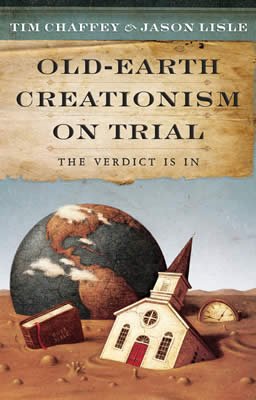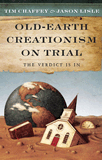
Preface
Young-earth creationists and old-earth creationists have been debating their respective positions for two centuries. The controversy has become one of the major battles in the modern church. In this book, young-earth creationists are defined as Christians who believe God created everything during a six-day period of time about six thousand years ago.1 These days are to be understood as approximately 24 hours in length. Old-earth creationists are defined as Christians who believe God created everything during the course of the past several billion years. It is important to understand that young-earth creationists do not necessarily agree with each other on every point and old-earth creationists do not agree with each other on every point.
Both sides appeal to the Scriptures for support. However, as will be demonstrated, many of the arguments used by the old-earth creationists do not stand up to scrutiny. Young-earth creationists have often supplied responses to these arguments, but it seems these responses are often ignored and the poor arguments persist. One of the goals of this book is to call attention to the faulty and sometimes misleading argumentation that exists in this debate.
The young-earth creationists’ responses typically take one of two forms. First, brief articles designed to refute a particular claim are published in magazines or on websites. Second, a book is written to respond to the views of a particular old-earth creationist or to seriously critique certain arguments pertaining to one area of research.
This book is unique in that it provides a thorough biblical, theological, and scientific critique of old-earth creationism while maintaining its readability. Many of the books designed to refute old-earth creationism contain a great deal of technical jargon and remain above the head of the average layperson. We have consciously endeavored to avoid this language as much as possible in this book. To help the reader when these terms do arise, such terms will be defined in text boxes on the first page in which they appear. Also, for those who are looking for more detail on a given subject, this book is documented so that readers can easily find more information. Appendix F is provided for readers looking for specific young-earth scientific arguments that are beyond the scope of this book.
Although the scientific evidence certainly bears weight in the debate between these two camps, this work focuses mainly on biblical and theological arguments. After all, from a Christian perspective, if one side cannot support its view from Scripture, then it cannot be the proper view. Nonetheless, it is important to show that good science does support the biblical time scale. For this reason, we will deal with the philosophy and application of science and how evidence is interpreted in chapters 7 and 8.
To deal with this subject, two major areas must be covered. First and foremost, the age of the earth must be examined. Does the Bible teach a young age (approximately 6,000 years) for the earth (and universe) or does it support the idea that the age of our planet is about 4.5 billion years and that of the universe about 14 billion years? Second, the flood of Noah’s day must be studied in detail. If the Flood waters covered the entire earth, then a severe blow is dealt to the old-earth creationism camp. However, the converse is also true. If the Flood only covered a region of the planet, then young-earth creationism has no mechanism to explain the geologic features of the world. Furthermore, if the Flood was a global event, then the young-earth creationists’ claim that Genesis 1–11 should be interpreted as straightforward, literal history is strongly supported.
Since this is such an important debate, suggestions for improving the debate are provided for both sides. God will be honored when both “old-earthers” and “young-earthers” engage in honest debate rather than resorting to misrepresentation, ambiguity, straw-man arguments, and caustic language. It is our hope that this book will serve to clarify the debate by giving an up-to-date defense of the young-earth view and by exposing the many fallacious arguments used in defense of the old-earth views.
Above all, both sides must remember that God’s Word is inspired, inerrant, and authoritative. It is our responsibility to faithfully proclaim His Word to an unbelieving world. God stated in Isaiah 55:11:
So shall My word be that goes forth from My mouth; it shall not return to Me void, but it shall accomplish what I please, and it shall prosper in the thing for which I sent it.
The primary goal of this work is to call the Church back to the authority of Scripture rather than trusting our own methods and ideas (Ps. 118:8). May God stir you to develop a deeper love and trust for His Word and His Son.)
Old-Earth Creationism on Trial
Opting to skirt the controversy of Genesis as literal history, the biblical authority of the Holy Word is called into question and reduced to a collection of mere stories.
Read Online Buy BookFootnotes
- Some young-earth creationists allow for the possibility of gaps in the Genesis genealogies. By doing this, they allow for an extra four thousand years or so.)
See Appendix C for information on the idea of gaps in the genealogies.
Recommended Resources

Answers in Genesis is an apologetics ministry, dedicated to helping Christians defend their faith and proclaim the good news of Jesus Christ.
- Customer Service 800.778.3390
- © 2024 Answers in Genesis




